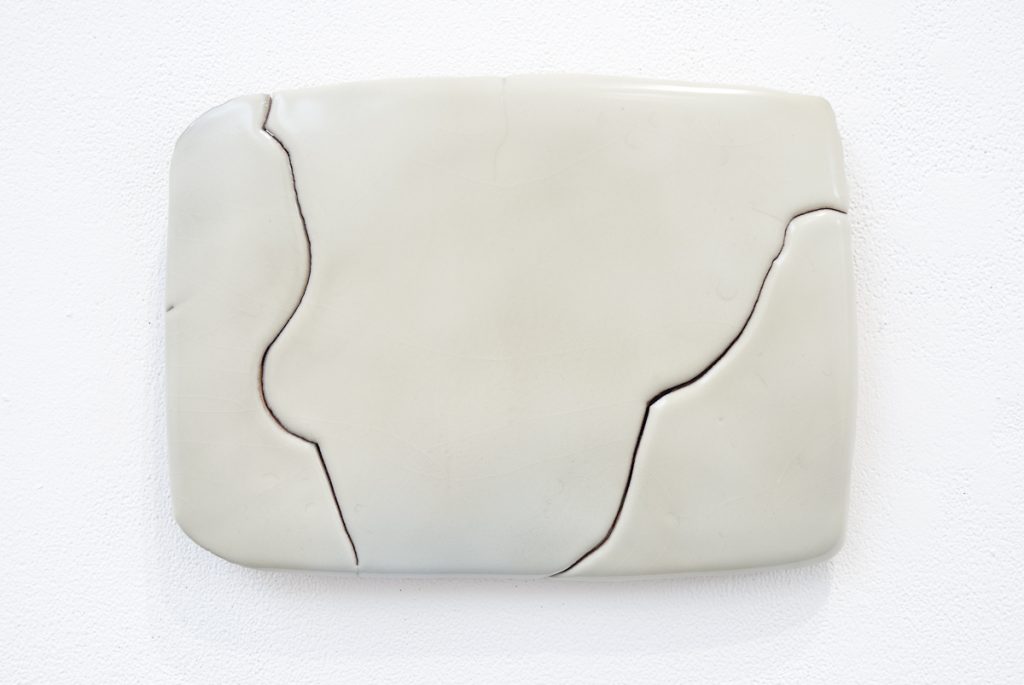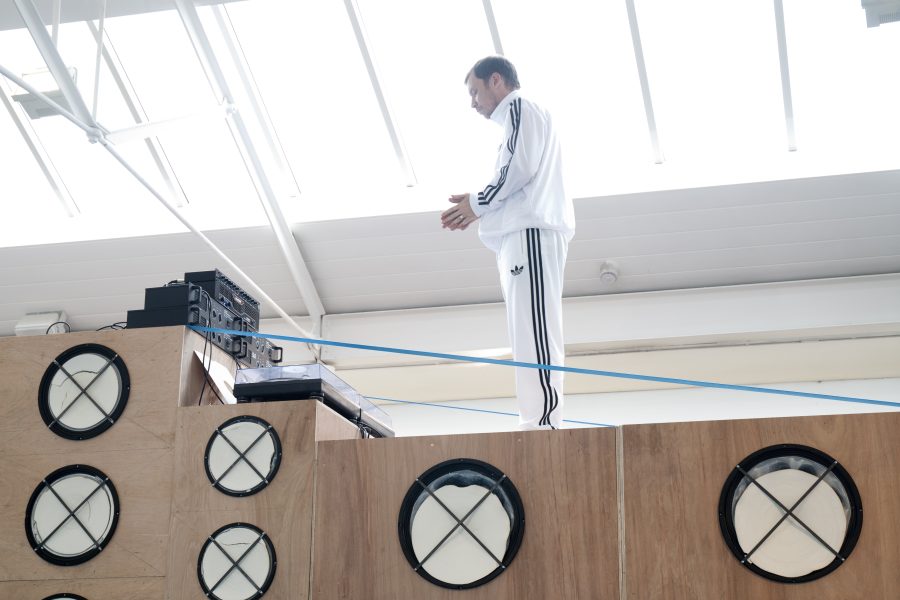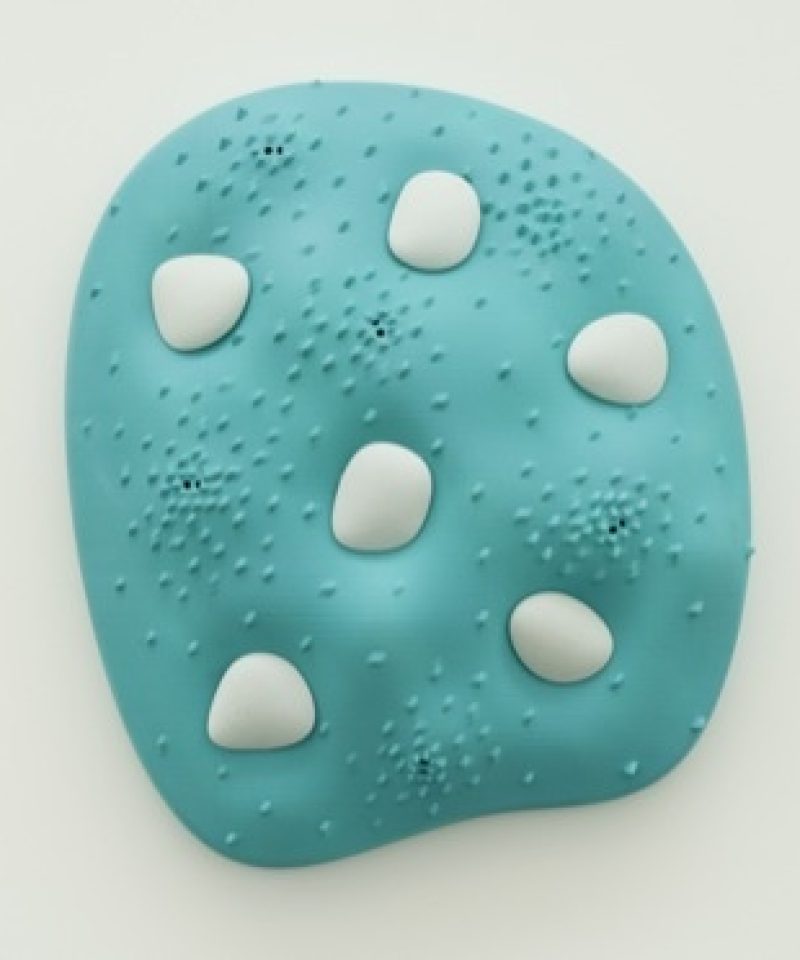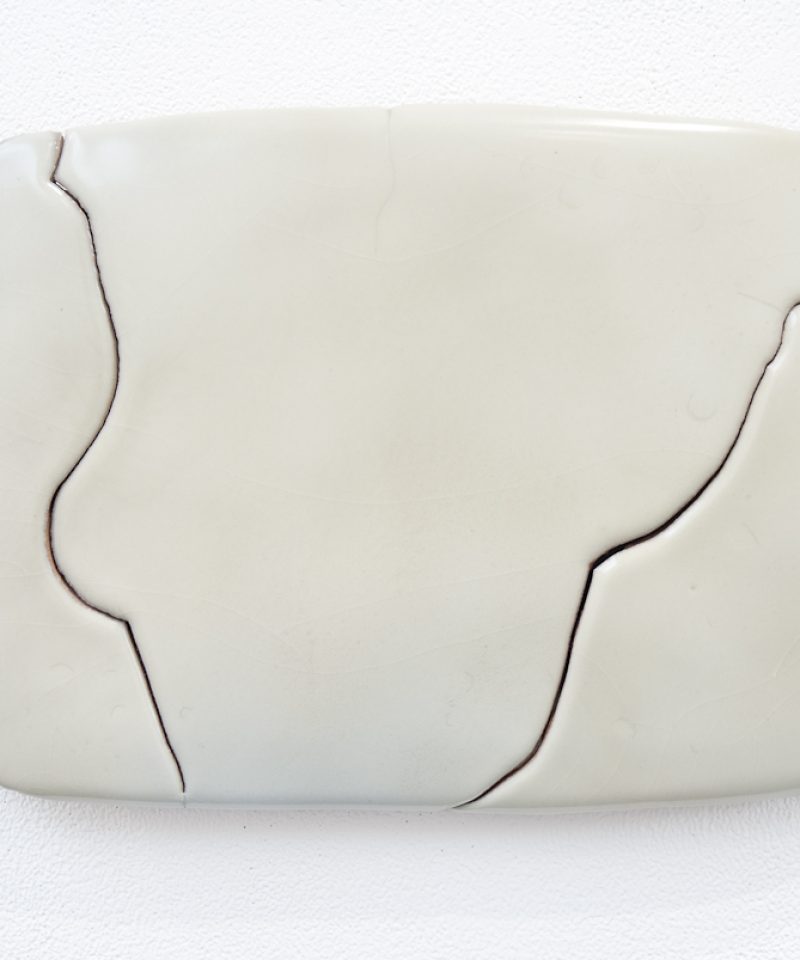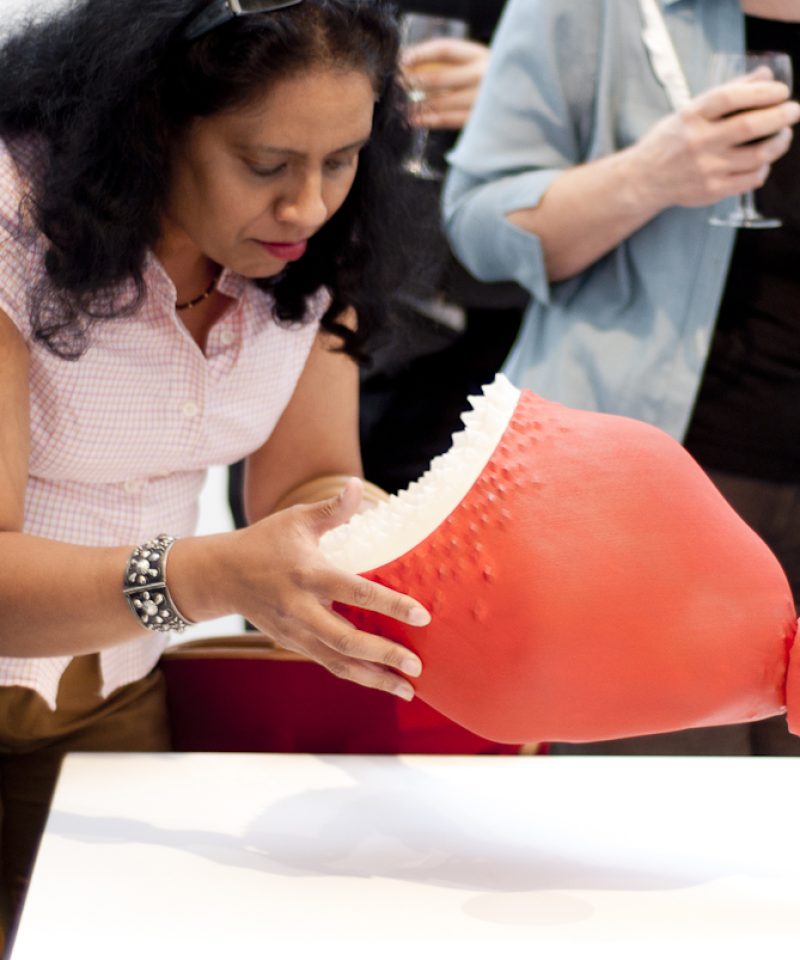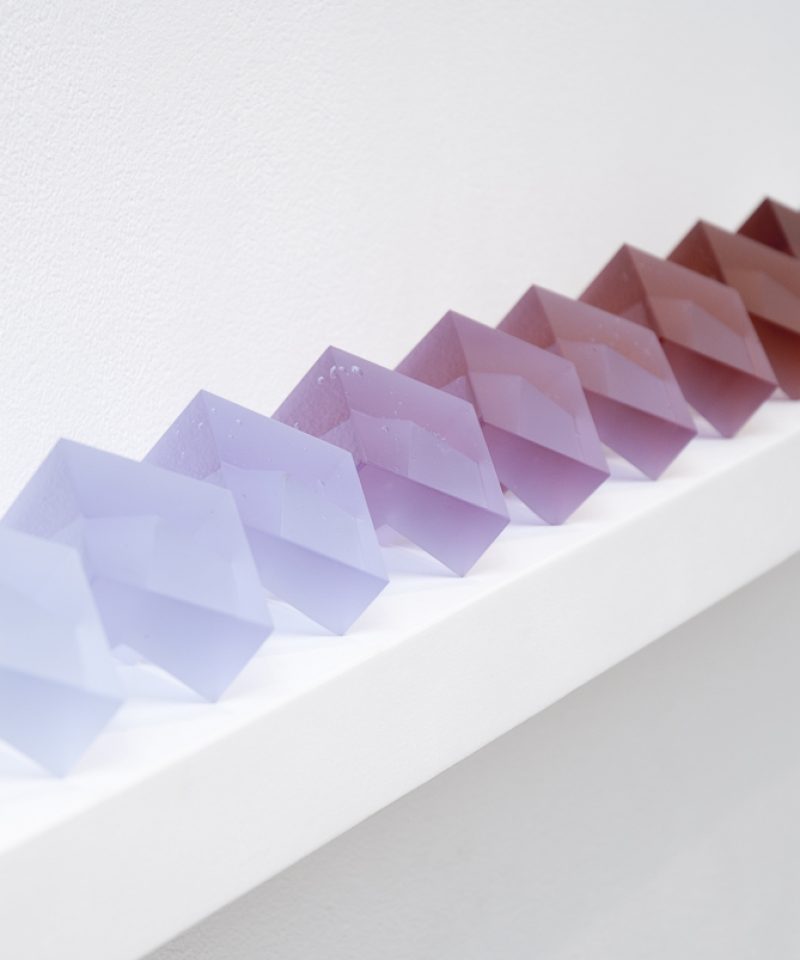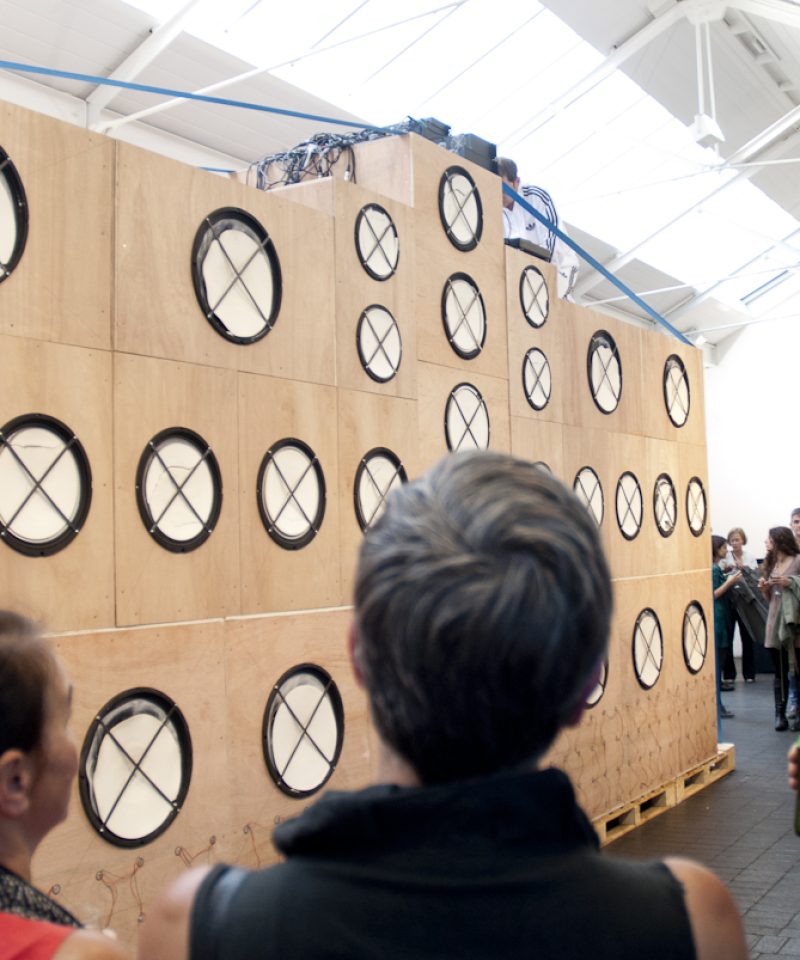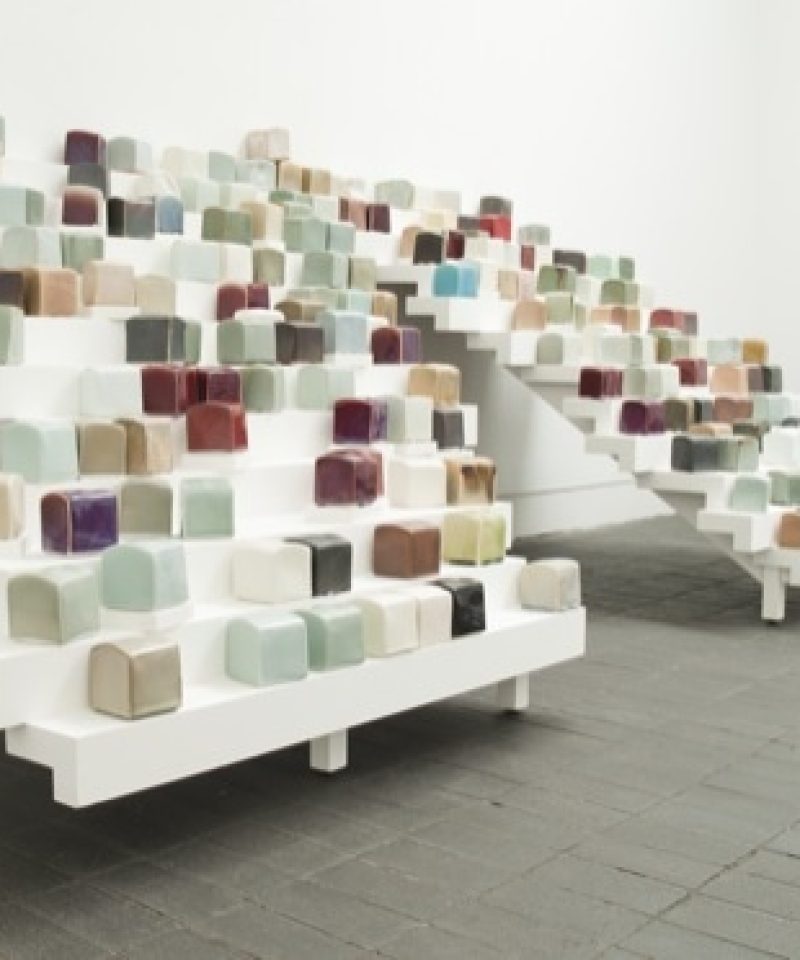“I love ceramic glaze. It touches me, fascinates me and fills me with wonder. It is because of a glaze that had so moved me that I decided to become a potter, and a glaze artist. Most of all it is the depth of a ceramic glaze that I am awed by and which draws me in. I am interested in the ability of a ceramic glaze to attract the viewer towards an inner space where they can lose themselves in its contemplation, possibly experiencing an aesthetic, artistic, emotional shock.” — Emmanuel Boos
Emmanuel Boos is passionate about ceramics. No, Emmanuel Boos is crazy about ceramics! He absolutely adores the medium, and his infatuation is clearly evidenced by his remarkable collection of works in the Jerwood Makers Open.
Specifically, Boos is on a quest to investigate the perception of depth in ceramic glazes. The ceramic form and its relation to glazes — how it supports, triggers or contributes to the perception of depth — is his central concern. His ever expanding installation, Cobblestones, for example, features an incredible range of experimental glazes that Boos has developed over the years in his mission to explore depth. Here are rich purples, translucent greens, earthy reds and cloudy greys. Some appear lustrous while others are matte yet all of them, to a lesser of greater extent, provoke the illusion of spatial depth, taking the eye into and beyond their surfaces. For the JMO Boos has embarked on an ambitious new body of work. His Plane series comprise slabs of paper porcelain that either hang on walls like paintings or lie flat like sculptures. Despite being demurely coloured, the glazes on these works seem far more playful than the cobblestones, developing in runs, drops, flows and pools. One piece, lying flat on a table, appears to be melting – its glaze dripping over the work’s edge like soft Camembert cheese.
By embracing the unpredictable nature of glaze, Boos demonstrates that an exploration of perspectival depth is not his only concern here — he is also fascinated by accidents and surprises. Clay can be a temperamental substance and things do not always go according to plan. Fissures, gashes or cracks are embraced as part of the work, giving these pieces an incredible sense of fragility. But whether the focus is on the transformative potential of glazes or the friable nature of his chosen medium, the resulting surfaces are, in Boos’s own words, ‘an invitation to contemplate and dream poetically of material qualities and processes. Surface and depth. Void and substance.’
